Impressions on Market Day
Eighty-two percent of Ethiopia population is rural – 68 million. On the outskirts of the urban centers of Bahir Dar and Gondar on a busy Saturday in the rainy season, most of these are headed to market on muddy dirt roads. Some are lucky enough to have wheels of some sort (carts, bicycles) or pack animals. Most are on foot and carry their loads on their backs. Many many more live in rural areas where there are no roads or public transportation. This photo essay provides a small glimpse into the lives of the more accessible…
Feet Keep Life Moving
The people of the country must rely on their feet, and if they are lucky, a donkey. Rubber boots and gel shoes are a valued commodity during the rainy planting season with a monthly average of 11 inches of rain.
Head and Shoulders Above Average
They carry the weight of their world on their backs with impossible loads that need perfect balance.
Faces with Many Stories
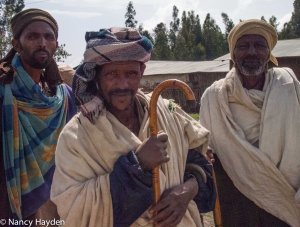
For men, the smiles disappear as soon as the camera is turned on them…but when the camera is off, they can’t hide a mischievous twinkle in their eyes
People in the country are open and joyous with some mysterious resiliency. Always ready with a wave and a smile…even if it means putting their load a little off balance. Where does this gentle and generous spirit for life and the stranger come from?
At Work
The majority of Ethiopia’s commerce is generated through agriculture. But it is primarily subsistence, with each family growing just enough to survive. I saw no signs of communes, much less technology, to improve efficiencies. Sadly, I am told that Pakistan is now buying up many of these agricultural leases to send food back there. Then what will these people do?
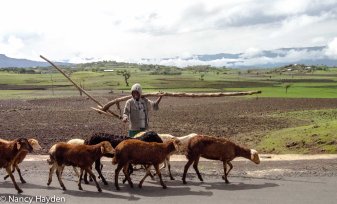
These ubiquitous ploughs are described in the national museum as if they were part of cultural history long gone…not so!
At Home
The biggest concentration of homes are along the main roads approaching town from the outlying areas…where you can see signs of electricity and involvement in local village commerce. From hilltops and plane windows I see endless hills and valleys containing isolated villages and homesteads accessible only by the “animal way” …. or footpath.

A relatively luxurious looking homestead compared to most…grass in front, good roof, mud on sides of walls…
Fruits of Labor: to Market
Everywhere in the country people are streaming towards villages and towns for Saturday market…by boat, bus, bicycle, cart, and foot. Sometimes the road is so crowded one cannot drive a car through the people and animals; for others the way is lonely and isolated.
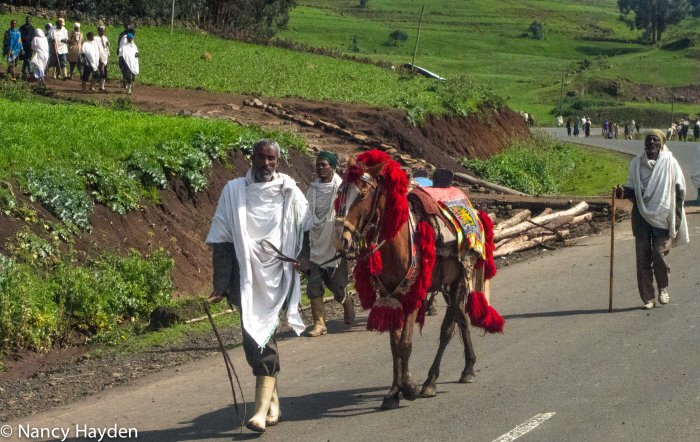
Dressed for the holy day to follow Saturday market this weekend. Is it faith that breathes the spirit of resilience into these lives?
Young and Old At Play
Even as all throughout the countryside labor to bring goods to market, a lucky few can take time out to play.

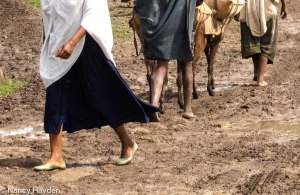
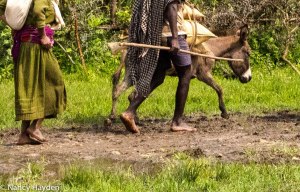
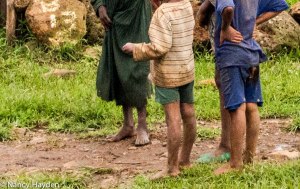
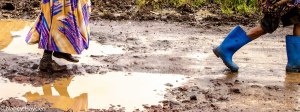
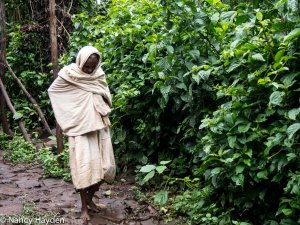


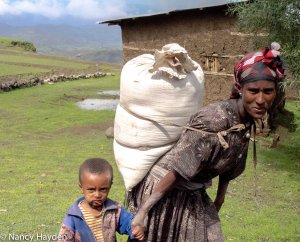











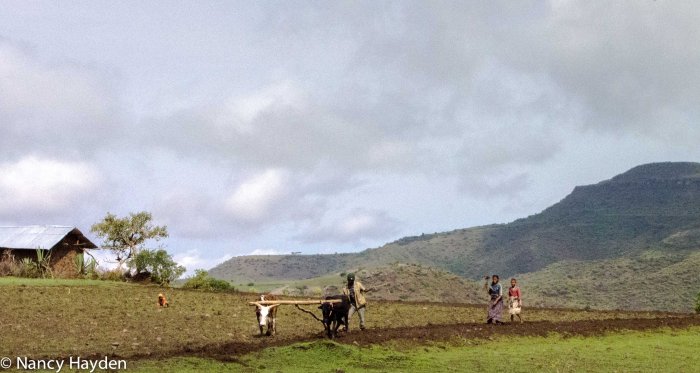
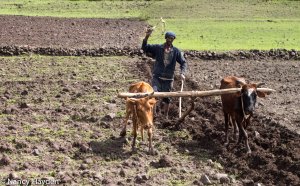






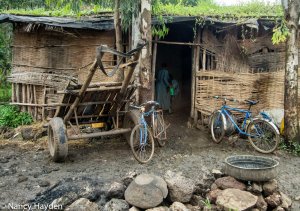

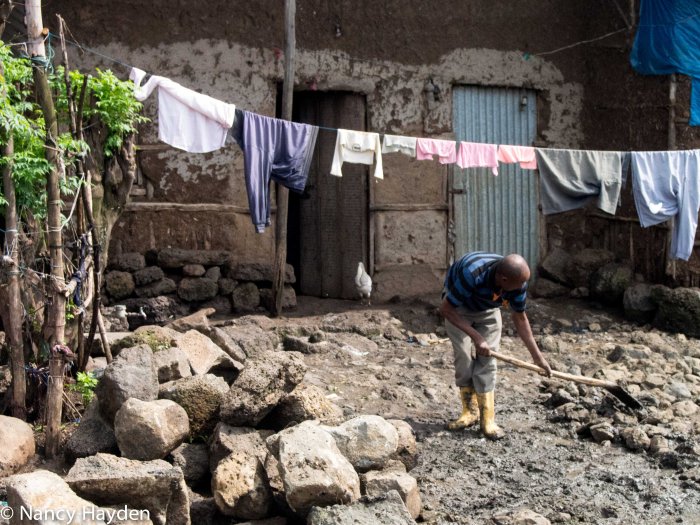


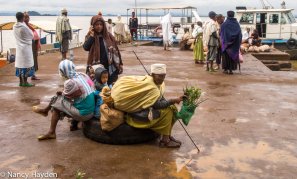

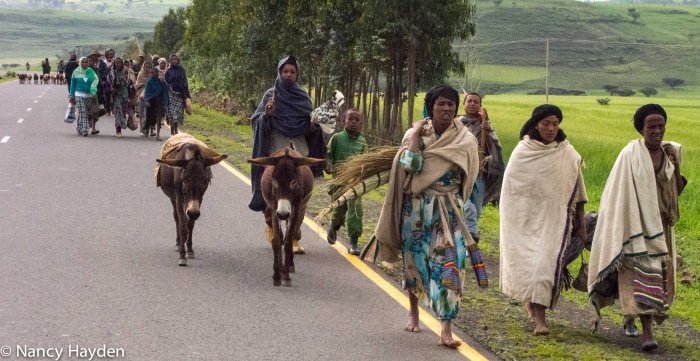





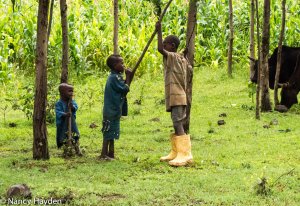
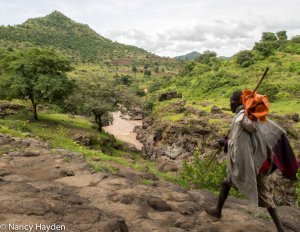


Nancy, your journey is so fascinating and so enhanced by these beautiful pictures. Your photography is great. Many thanks for sharing your insights. Miss you in ABQ.
…so touching- your journey – Nancy. I try to follow your steps – good luck for you and thank you for the brillant photos and your thoughts.
love Klaudia
Wow What goods do they offer tourists? What is their water supply? Stay safe 😘
Depending on where you are, tourists get different offerings. Here in the capital city you see a fair sample of nice hand woven, traditional textiles. Shopping in the rural areas is a lot like shopping in Mexico or Taos…99% imitations of the same things over and over – religious items being exploited as number one, then cultural icons with historical roots. As in so many cases, the quality is mostly not very good for the tourists but the old pieces, if you can find them, are nice. I managed to find a few…I think. However, with the large Chinese presence investing in Africa, they might have figured out how to make things look old. The Chinese are pretty good at that – as you know some of our Native American friends have as well. I think it is part of selling an indigenous culture’s heritage. Water supply here is not a problem – there is lots of it in the fertile areas where I have been…which include the headwaters of the Nile river. I’m safe so far! Ethiopia is pretty much a safe and honest society and very hospitable.
Thank you Nancy for a view of a world we are able to see from your eyes. What a resilient spirit they show. Cannot wait to hear your stories when you return. Much love!!
Amazing, great pictures and comments. Overall not much has changed since my short visit 25 years ago in Addis Abeba. Same problems, same impressions, same things to deal with. Everyone has his purpose in life: make it til tomorrow… without knowing much of what is going on in the rest of the world.
From my limited time in Ethiopia I suspect that what you say is true for the 80% of the people who live such hard lives. I did see hope and progress at the same time…much of which has been brought in by the Chinese! They are buidling roads throughout the country and a major metro rail system in Addis that will allow people to live in much better housing on the outskirts of the city and ride in, rather than the way so many have to live now. However, the rail system is only in Addis. The young people in Addis are vibrant and energetic and I think will push to take advantage of the openings that this gives them. They still have a long way to go! They also have the advantage that they did not have to live through the “red terror” of 20 years ago when government oppression killed all efforts for change and progress. I did not post those pictures, which were too terrible.
Love the pictures, your camera and your skills really are impressive. I got your change of plans, my responsive email bounced back. Stay safe and can’t wait to see all your pictures.